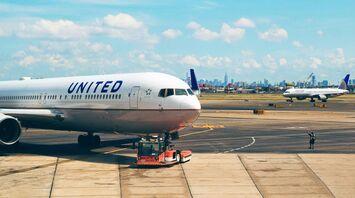U.S. Airport Spending Slows as Passengers Tighten Their Budgets

Recent trends show that passengers at U.S. airports are becoming more cautious about their spending, reflecting broader economic concerns. Travelers are cutting back on non-essential purchases, from expensive meals and drinks to souvenirs and luxury goods, as they navigate rising inflation and economic uncertainty. This shift in behavior marks a significant change in airport spending patterns, where travelers once indulged in food, beverages, and retail therapy while waiting for flights. Now, cost-consciousness is taking hold, leading to a noticeable dip in overall airport revenue.
A Decline in Airport Retail and Dining Sales
One of the most significant areas impacted by this trend is airport retail and dining. Once a staple of the airport experience, these services are now seeing fewer transactions. According to recent reports, passengers are increasingly opting for less expensive options or skipping purchases altogether in a bid to save money. This is particularly evident in categories like high-end dining and duty-free shopping, where sales have dropped as travelers prioritize essential spending over luxury items.
Fast food outlets and convenience stores within airports have fared better than their higher-end counterparts, as travelers look for more affordable meals. Many are also turning to bringing their own food, avoiding the typically marked-up prices found inside terminals. With inflation affecting food prices globally, travelers are more reluctant to splurge on airport dining, preferring to spend their money elsewhere or save for their final destination.
The Economic Factors Behind Reduced Spending
The reduction in airport spending is largely driven by rising inflation, higher living costs, and ongoing economic uncertainty. As prices increase across the board—from groceries to fuel—travelers are feeling the pinch and adjusting their budgets accordingly. This shift in consumer behavior reflects broader trends where households are reining in discretionary spending in response to economic pressures.
In addition to inflation, other factors such as increased airfare costs and tighter travel budgets are influencing passengers’ spending choices at airports. With ticket prices rising due to higher fuel costs and a post-pandemic surge in demand, many travelers are finding that they have less disposable income to spend during their journey. This is especially true for families and budget-conscious travelers who are more likely to cut back on non-essential purchases like airport meals, snacks, and gifts.
The Impact on Airports and Retailers
The reduction in passenger spending is creating challenges for airport retailers, food vendors, and service providers, who rely on a steady stream of customers to maintain profitability. Many airports have long counted on the captive audience of travelers to drive sales, particularly in high-traffic hubs where passengers may spend hours waiting for flights or layovers. With fewer passengers willing to spend, some retailers are now reconsidering their pricing strategies or introducing more budget-friendly options to attract cost-conscious travelers.
Moreover, the decline in airport spending could have wider implications for the financial health of airports themselves. Airports typically receive a portion of revenue from retail and dining sales through concessions and lease agreements, meaning that a sustained drop in passenger spending could affect airport operations and expansion plans. This may push some airports to explore alternative revenue streams, such as increasing parking fees, adding premium services, or raising airport taxes.
Travel Industry’s Response to Changing Consumer Behavior
Airports and vendors are not sitting idle in the face of these challenges. Some are adapting by offering more promotions, discounts, and deals aimed at enticing travelers to spend. Loyalty programs, exclusive discounts for frequent flyers, and bundled meal deals are becoming more common as airports look for creative ways to encourage spending while maintaining affordability for passengers.
Retailers, too, are adjusting their product offerings to cater to the new spending patterns. Many shops are placing a greater emphasis on lower-priced items, such as snacks, travel essentials, and souvenirs, in the hopes of capturing sales from cost-conscious travelers. Some are also focusing on convenience, with quick service options and grab-and-go meals that appeal to passengers looking for more affordable choices.
The Future of Airport Spending
As economic conditions continue to evolve, it remains to be seen whether this trend of reduced airport spending will be temporary or become a lasting change. Much depends on the broader economic environment and how quickly inflationary pressures ease. Should inflation stabilize, there is a possibility that passengers could begin to loosen their budgets, returning to pre-pandemic spending habits. However, if economic challenges persist, the trend of cautious spending at airports may become the new normal.
In the meantime, airports and retailers will need to remain agile and responsive to the needs of their passengers. By adjusting their offerings and pricing strategies, they can continue to provide value to travelers while navigating the shifting landscape of airport consumer behavior.



















